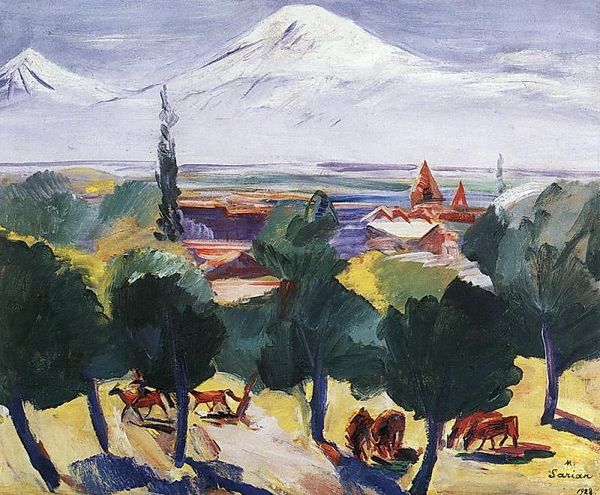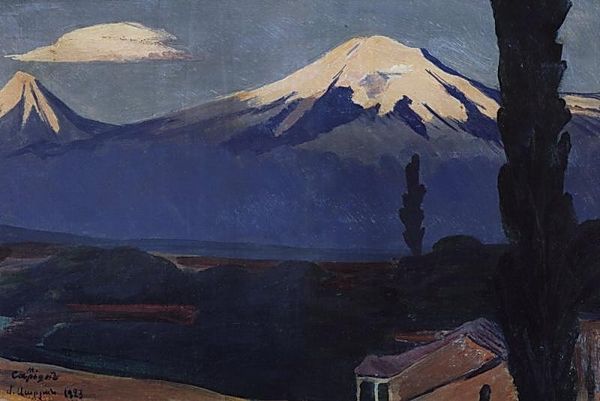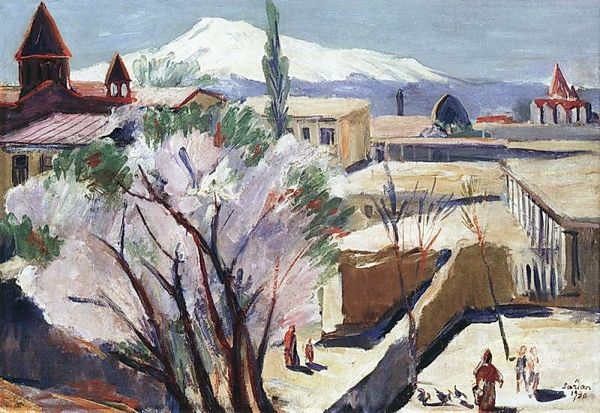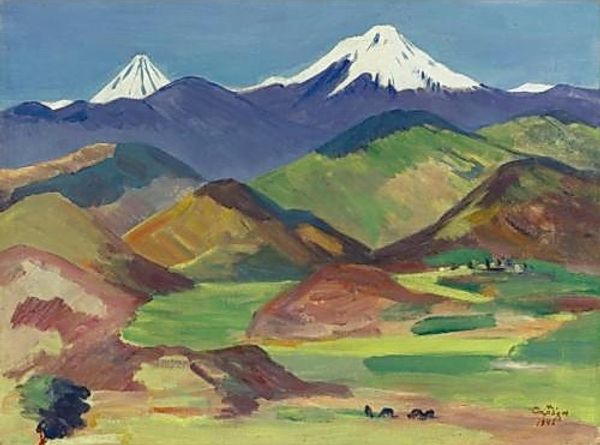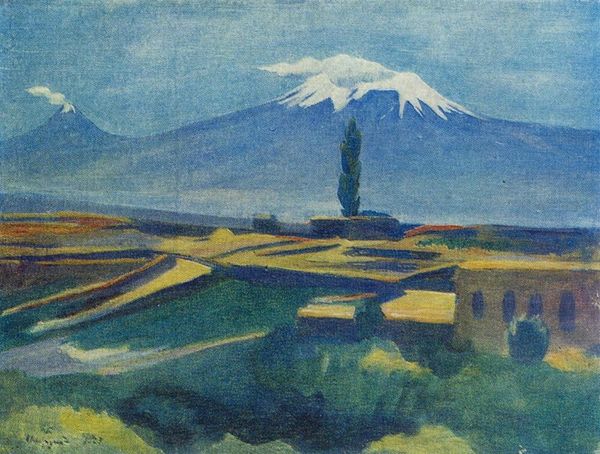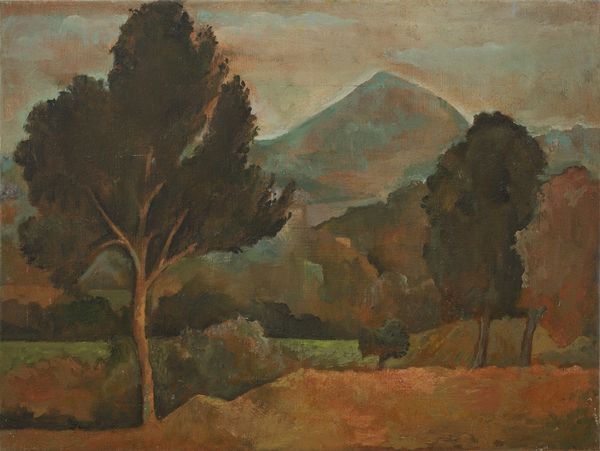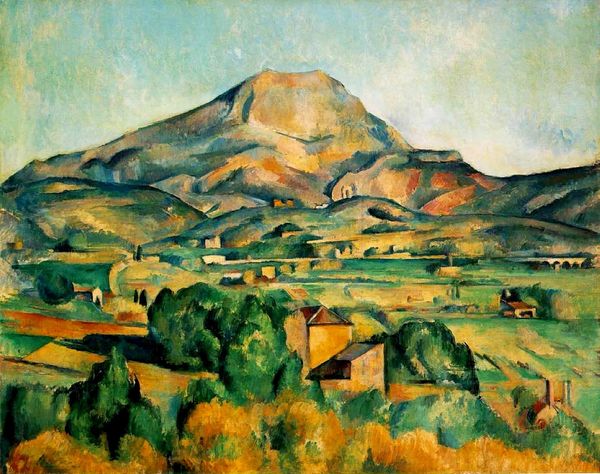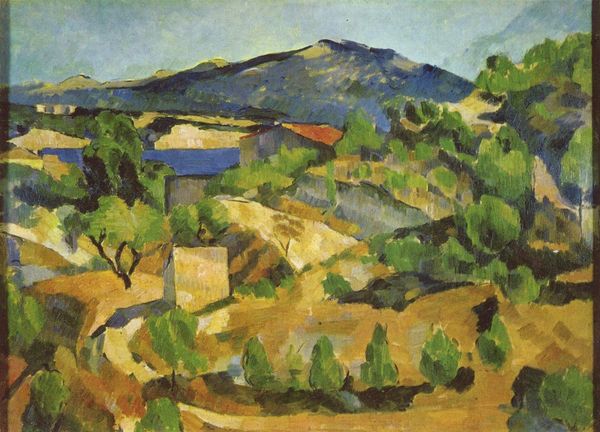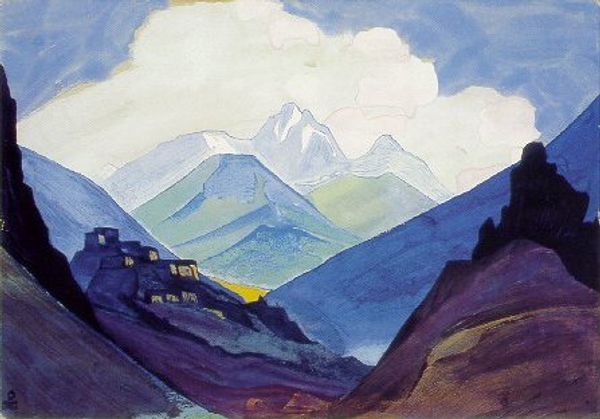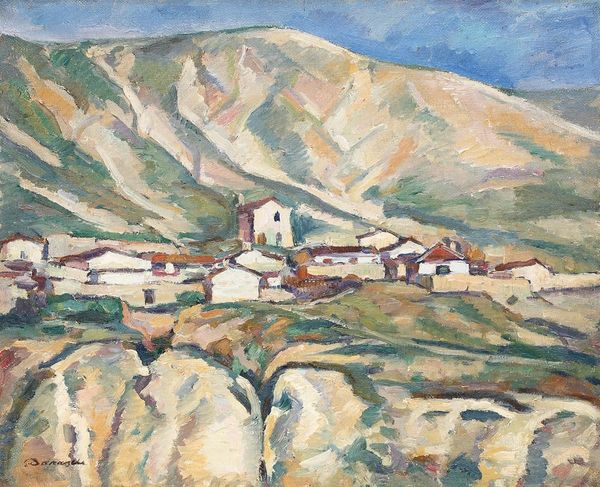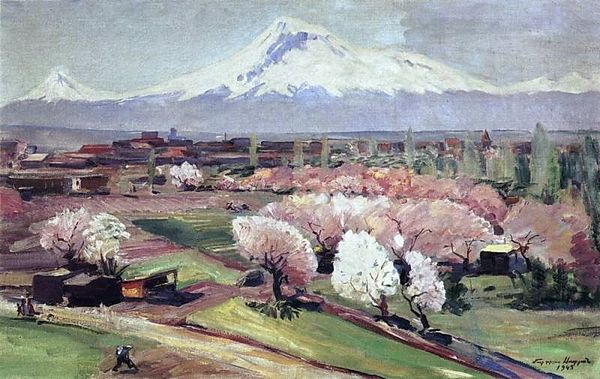
Copyright: Public domain US
Curator: Looking at this scene by Martiros Sarian, I'm immediately struck by the contrast. The flat, almost geometric planes of the landscape clash so beautifully with the soft, snow-capped peaks in the distance. It's a painting called "View of Ararat from Yerevan," completed in 1923. Editor: It feels like a memory, doesn't it? A simplification of reality, imbued with a certain melancholy. The muted colors amplify that feeling; the blue sky seems heavy, as if pressing down on the land. It’s stark. Curator: That starkness might come from the political climate of the time. Sarian lived through immense upheaval, the Armenian genocide deeply impacted him. This view, Ararat, was a potent symbol of Armenian identity, even more so since it was, and still is, just outside of Armenia's borders, across in Turkey. Editor: Right, the idea of a homeland just out of reach adds another layer of emotional weight to the piece. I see the modernist influence here. He's stripping away the extraneous, focusing on fundamental shapes and colors to convey a sense of place, and perhaps, a longing. It transcends a simple landscape. The brushwork too feels deliberate, confident even in its simplicity. You feel a certain solidity in those structures; despite everything, a resilience in the very buildings and landscape. Curator: Absolutely, he distills the essence of the landscape. Look how he flattens the foreground, reducing the houses and trees to blocks of color. He's playing with perspective, inviting us to see Yerevan through his modernist lens and consider what permanence might still look like when everything else seems fragile. Sarian studied in Moscow and was well versed in the European avant-garde. And the echoes of Cezanne are quite loud here. Editor: You’ve got that right! A powerful expression of both cultural identity and the trauma of displacement then, wrapped in the deceptively simple beauty of a landscape painting. Curator: Precisely, an intimate connection to the land as a source of identity and hope. I always leave thinking more than I expected. Editor: Absolutely. It really speaks to how art can be both a reflection and a quiet act of resistance.
Comments
No comments
Be the first to comment and join the conversation on the ultimate creative platform.
